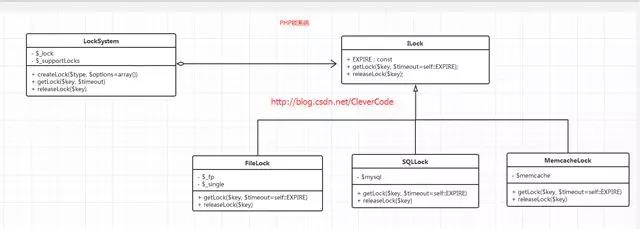一个在高并发下财务支付锁的问题分析
2019-08-27 07:12:18来源:编程学习网 阅读 ()


在工作项目中,会遇到一些php并发访问去修改一个数据问题,如果这个数据不加锁,就会造成数据的错误。下面将分析一个财务支付锁的问题。希望对大家有所帮助。
1,在没有应用锁机制的情况下
1.1 财务支付简化版本代码
<!--?php /** * pay.php * * 支付没有应用锁 * * Copy right (c) 2016 * * modification history: * -------------------- * 2016/9/10, by CleverCode, Create * */ //用户支付 function pay($userId,$money) { if(false == is_int($userId) || false == is_int($money)) { return false; } //取出总额 $total = getUserLeftMoney($userId); //花费大于剩余 if($money --> $total) { return false; } //余额 $left = $total - $money; //更新余额 return setUserLeftMoney($userId,$left); } //取出用户的余额 function getUserLeftMoney($userId) { if(false == is_int($userId)) { return 0; } $sql = "select account form user_account where userid = ${userId}"; //$mysql = new mysql();//mysql数据库 return $mysql->query($sql); } //更新用户余额 function setUserLeftMoney($userId,$money) { if(false == is_int($userId) || false == is_int($money)) { return false; } $sql = "update user_account set account = ${money} where userid = ${userId}"; //$mysql = new mysql();//mysql数据库 return $mysql->execute($sql); } ?>
1.2 问题分析
如果有两个操作人(p和m),都用用户编号100账户,分别在pc和手机端同时登陆,100账户总余额有1000,p操作人花200,m操作人花300。并发过程如下。
p操作人:
-
取出用户的余额1000。
-
支付后剩余 800 = 1000 - 200。
-
更新后账户余额800。
m操作人:
-
取出用户余额1000。
-
支付后剩余700 = 1000 - 300。
-
支付后账户余额700。
两次支付后,账户的余额居然还有700,应该的情况是花费了500,账户余额500才对。造成这个现象的根本原因,是并发的时候,p和m同时操作取到的余额数据都是1000。
2 加锁设计
锁的操作一般只有两步,一 获取锁(getLock);二是释放锁(releaseLock)。但现实锁的方式有很多种,可以是文件方式实现;sql实现;Memcache实现;根据这种场景我们考虑使用策略模式。
2.1 类图设计如下

2.2 php源码设计如下
LockSystem.php
<!--?php /** * LockSystem.php * * php锁机制 * * Copy right (c) 2016 * * modification history: * -------------------- * 2016/9/10, by CleverCode, Create * */ class LockSystem { const LOCK_TYPE_DB = 'SQLLock'; const LOCK_TYPE_FILE = 'FileLock'; const LOCK_TYPE_MEMCACHE = 'MemcacheLock'; private $_lock = null; private static $_supportLocks = array('FileLock', 'SQLLock', 'MemcacheLock'); public function __construct($type, $options = array()) { if(false == empty($type)) { $this--->createLock($type, $options); } } public function createLock($type, $options=array()) { if (false == in_array($type, self::$_supportLocks)) { throw new Exception("not support lock of ${type}"); } $this->_lock = new $type($options); } public function getLock($key, $timeout = ILock::EXPIRE) { if (false == $this->_lock instanceof ILock) { throw new Exception('false == $this->_lock instanceof ILock'); } $this->_lock->getLock($key, $timeout); } public function releaseLock($key) { if (false == $this->_lock instanceof ILock) { throw new Exception('false == $this->_lock instanceof ILock'); } $this->_lock->releaseLock($key); } } interface ILock { const EXPIRE = 5; public function getLock($key, $timeout=self::EXPIRE); public function releaseLock($key); } class FileLock implements ILock { private $_fp; private $_single; public function __construct($options) { if (isset($options['path']) && is_dir($options['path'])) { $this->_lockPath = $options['path'].'/'; } else { $this->_lockPath = '/tmp/'; } $this->_single = isset($options['single'])?$options['single']:false; } public function getLock($key, $timeout=self::EXPIRE) { $startTime = Timer::getTimeStamp(); $file = md5(__FILE__.$key); $this->fp = fopen($this->_lockPath.$file.'.lock', "w+"); if (true || $this->_single) { $op = LOCK_EX + LOCK_NB; } else { $op = LOCK_EX; } if (false == flock($this->fp, $op, $a)) { throw new Exception('failed'); } return true; } public function releaseLock($key) { flock($this->fp, LOCK_UN); fclose($this->fp); } } class SQLLock implements ILock { public function __construct($options) { $this->_db = new mysql(); } public function getLock($key, $timeout=self::EXPIRE) { $sql = "SELECT GET_LOCK('".$key."', '".$timeout."')"; $res = $this->_db->query($sql); return $res; } public function releaseLock($key) { $sql = "SELECT RELEASE_LOCK('".$key."')"; return $this->_db->query($sql); } } class MemcacheLock implements ILock { public function __construct($options) { $this->memcache = new Memcache(); } public function getLock($key, $timeout=self::EXPIRE) { $waitime = 20000; $totalWaitime = 0; $time = $timeout*1000000; while ($totalWaitime < $time && false == $this->memcache->add($key, 1, $timeout)) { usleep($waitime); $totalWaitime += $waitime; } if ($totalWaitime >= $time) throw new Exception('can not get lock for waiting '.$timeout.'s.'); } public function releaseLock($key) { $this->memcache->delete($key); } }
3 应用锁机制
3.1 支付系统应用锁
<!--?php /** * pay.php * * 支付应用锁 * * Copy right (c) 2016 * * modification history: * -------------------- * 2016/9/10, by CleverCode, Create * */ //用户支付 function pay($userId,$money) { if(false == is_int($userId) || false == is_int($money)) { return false; } try { //创建锁(推荐使用MemcacheLock) $lockSystem = new LockSystem(LockSystem::LOCK_TYPE_MEMCACHE); //获取锁 $lockKey = 'pay'.$userId; $lockSystem--->getLock($lockKey,8); //取出总额 $total = getUserLeftMoney($userId); //花费大于剩余 if($money > $total) { $ret = false; } else { //余额 $left = $total - $money; //更新余额 $ret = setUserLeftMoney($userId,$left); } //释放锁 $lockSystem->releaseLock($lockKey); } catch (Exception $e) { //释放锁 $lockSystem->releaseLock($lockKey); } } //取出用户的余额 function getUserLeftMoney($userId) { if(false == is_int($userId)) { return 0; } $sql = "select account form user_account where userid = ${userId}"; //$mysql = new mysql();//mysql数据库 return $mysql->query($sql); } //更新用户余额 function setUserLeftMoney($userId,$money) { if(false == is_int($userId) || false == is_int($money)) { return false; } $sql = "update user_account set account = ${money} where userid = ${userId}"; //$mysql = new mysql();//mysql数据库 return $mysql->execute($sql); } ?>
3.2 锁分析
p操作人:
-
获取锁:pay100
-
取出用户的余额1000。
-
支付后剩余 800 = 1000 - 200。
-
更新后账户余额800。
-
释放锁:pay100
m操作人:
-
等待锁:pay100
-
获取锁:pay100
-
获取余额:800
-
支付后剩余500 = 800 - 300。
-
支付后账户余额500。
-
释放锁:pay100
两次支付后,余额500。非常完美了解决了并发造成的临界区资源的访问问题。
原文链接:http://www.phpxs.com/post/6498/
如有疑问请与原作者联系
标签:
版权申明:本站文章部分自网络,如有侵权,请联系:west999com@outlook.com
特别注意:本站所有转载文章言论不代表本站观点,本站所提供的摄影照片,插画,设计作品,如需使用,请与原作者联系,版权归原作者所有
- 面试官问我:一个 TCP 连接可以发多少个 HTTP 请求?我竟然 2019-09-30
- PHP高并发优化处理——redis层面详细步骤 2019-09-17
- PHP四大主流框架的优缺点,第一个最难 2019-09-17
- 面试:如何解决web高并发?这个回答给满分 2019-09-08
- PHP实现Redis单据锁以及防止并发重复写入 2019-09-02
IDC资讯: 主机资讯 注册资讯 托管资讯 vps资讯 网站建设
网站运营: 建站经验 策划盈利 搜索优化 网站推广 免费资源
网络编程: Asp.Net编程 Asp编程 Php编程 Xml编程 Access Mssql Mysql 其它
服务器技术: Web服务器 Ftp服务器 Mail服务器 Dns服务器 安全防护
软件技巧: 其它软件 Word Excel Powerpoint Ghost Vista QQ空间 QQ FlashGet 迅雷
网页制作: FrontPages Dreamweaver Javascript css photoshop fireworks Flash
